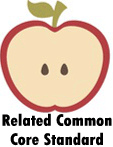Pros and Cons Worksheets
Related ELA Standard: ELA

In the typical day, an average adult will make roughly 35,000 decisions. When you take into account that we sleep roughly for a third of our day, that means we are making a choice every 2-3 seconds. Most of these daily choices are simple and do not require much thought. These are often situations where we do not have many choices. Such as the choice of what to write with in school. If you only have a pen and pencil, there is not much thought required. Many times, we come across decisions that take a great deal of careful thought. This is where it is best to identify the positive aspects (pros) of making a certain choice. As well as the negative features (cons) of making certain decisions. When we have weighty choices to make stating all these traits helps us clearly make the best choice. The worksheets found below can help students learn how to begin using this technique when making their own decisions.
Pros and Cons Worksheets To Print:
Weighing In - This is as basic as it gets for you to contemplate two different options.
T Sets - This outlines a very quick method that you can use on demand in the future.
Grading Our Choices - Use the
numerical scale to indicate how good or bad each aspect of each
choice is.
Making a Decision - Use the graphic organizer to weigh the advantages and
disadvantages of a particular action or point of view.
Issue At Hand - If you would like to get after your thoughts, use this.
Outlines - This gives some shape, literally, to your thoughts.
After the Fact - This kind of being a Monday Morning Quaterback. Sometimes that is helpful.
How to Decide - Think it out and ask yourself which matters the most.
How to Use a Pros and Cons List
Pros and Cons lists are tools that can help us make better quick decisions. They can also help us make life changing decisions. It reminds me of the time my son was deciding on college. I went out to the office supply story and bought huge oak tag papers with a sticky back. We asked him to identify the pros and cons of each of the schools that he had been accepted to. We then had him rank the things that were most important to him. Through that process he went to a school where he was ultimately happy and thrived. Pro and Con lists are great for determining a Yes/No answer to something.
To create these lists, start by writing the title of the decision you are trying to make. This title will often be a good reflection point. Then create a T-chart and write “Pros” on the left and “Cons” on the right. How you proceed from here is often by personal preference. Some people wish to just brainstorm and think of all the things that come to mind. Others break each column down and think through each Pro and then every Con. Also do not to forget to create a best and worst possible outcome line. This is where you can clearly say to yourself, “If I make this choice, what is the best and worst outcome that is possible?”
When you are putting these lists together make sure to only focus on the differences between them. If what you are comparing things that all share the same attribute, there is no sense in listing it. This only makes more noise when you are finally evaluating the best choice. I would also suggest that you focus on attributes that are important to you. If a certain point does not matter to you, at all, once again it will only delay your ability to make a solid decision.
Once you feel that you have a solid list together, begin to evaluate it. I sometimes like to reorder the list by writing it again. To do this, take your list and place a number 1 next to each attribute that is the most important to you. Continue with this number system as you look at all pieces on the list. Then rewrite the list with the most important at the top and order to the least important. This makes the evaluation process much easier and streamlined for you.
